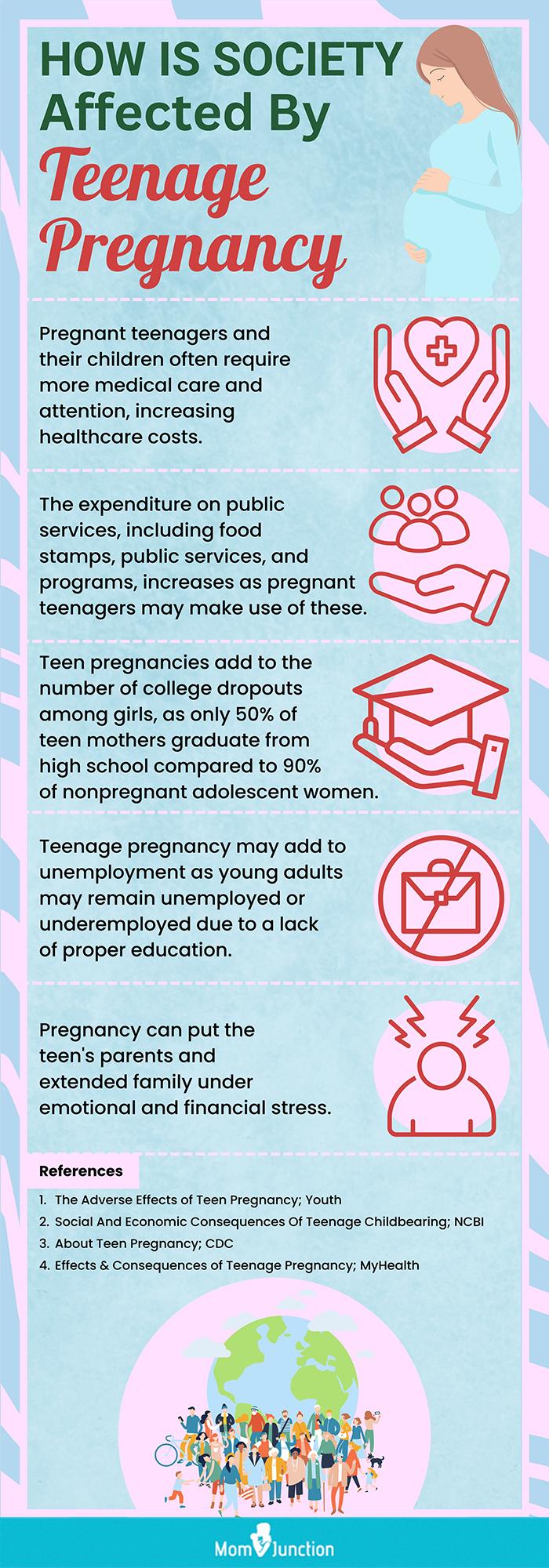
Teen Pregnancy: A Multifaceted Issue with Profound Consequences
Introduction
Teen pregnancy, defined as pregnancy occurring in individuals under the age of 20, is a complex and multifaceted issue with far-reaching consequences for both the young mothers and their children. It is a global problem, affecting millions of adolescents annually. In the United States alone, approximately 750,000 teenagers become pregnant each year. This article will delve into the intricate web of causes and effects associated with teen pregnancy, shedding light on the factors that contribute to this phenomenon and the profound impact it has on the lives of young individuals.
Causes of Teen Pregnancy
The causes of teen pregnancy are numerous and often interconnected, reflecting the complex interplay of biological, social, economic, and psychological factors.
Biological Factors:
- Early Puberty: The onset of puberty at a younger age increases the risk of teen pregnancy as adolescents may engage in sexual activity before they are fully aware of the consequences.
- Hormonal Imbalances: Hormonal fluctuations during puberty can lead to irregular menstrual cycles, making it more difficult for teens to track their fertility.
Social Factors:
- Lack of Education and Information: Limited access to comprehensive sex education and reproductive health services can hinder teens’ understanding of their bodies and the risks associated with sexual activity.
- Peer Pressure: Adolescents may feel pressured to engage in sexual activity by their peers, who may normalize or even encourage risky behaviors.
- Family Dynamics: Dysfunctional family environments, such as those characterized by conflict, abuse, or neglect, can increase the likelihood of teen pregnancy.
- Social Norms: In some cultures or communities, teen pregnancy may be viewed as acceptable or even desirable, perpetuating the cycle of early childbearing.
Economic Factors:
- Poverty: Economic hardship can limit access to healthcare, education, and other resources that can help prevent teen pregnancy.
- Lack of Opportunities: Limited employment opportunities and educational attainment can reduce teens’ aspirations and increase their vulnerability to risky behaviors, including sexual activity.
Psychological Factors:
- Low Self-Esteem: Adolescents with low self-esteem may engage in sexual activity as a means of gaining attention or validation.
- Depression and Anxiety: Mental health issues can impair judgment and decision-making, increasing the risk of unprotected sex.
- Substance Abuse: Alcohol and drug use can cloud judgment and reduce inhibitions, leading to risky sexual behaviors.
Effects of Teen Pregnancy
Teen pregnancy has a profound impact on the lives of both the young mothers and their children.
Effects on Young Mothers:
- Health Risks: Teen mothers face increased risks of pregnancy complications, such as preeclampsia, gestational diabetes, and premature birth. They are also more likely to experience postpartum depression and other mental health issues.
- Educational Disruption: Teen pregnancy often leads to school dropout, which can limit future educational and employment opportunities.
- Economic Hardship: Young mothers often face financial challenges, as they may have limited job skills and may be unable to complete their education.
- Social Stigma: Teen mothers may experience social stigma and judgment from their peers, family, and community.
Effects on Children:
- Health Problems: Children born to teen mothers are at increased risk of low birth weight, developmental delays, and chronic health conditions.
- Educational Disparities: Children of teen mothers are more likely to drop out of school and have lower educational attainment.
- Behavioral Problems: Children of teen mothers may exhibit increased behavioral problems, such as aggression and delinquency.
- Intergenerational Poverty: Teen pregnancy can perpetuate a cycle of poverty, as children of teen mothers are more likely to become teen parents themselves.
Prevention and Intervention
Addressing the issue of teen pregnancy requires a comprehensive approach that involves prevention, intervention, and support.
Prevention:
- Comprehensive Sex Education: Providing teens with accurate and age-appropriate information about sexual health and reproduction is essential for preventing teen pregnancy.
- Access to Contraception: Ensuring that teens have access to affordable and effective contraception is crucial for reducing the risk of unintended pregnancies.
- Peer Education Programs: Peer-led programs can empower teens to make informed decisions about their sexual health and encourage healthy behaviors.
- Family and Community Support: Strengthening family bonds and providing community support can help reduce the risk factors associated with teen pregnancy.
Intervention:
- Prenatal Care: Providing prenatal care to teen mothers is essential for ensuring the health of both the mother and the baby.
- Parenting Education: Offering parenting classes and support groups can help teen mothers develop the skills and knowledge they need to raise healthy children.
- Educational Support: Providing educational opportunities and support to teen mothers can help them complete their education and improve their future prospects.
- Economic Assistance: Financial assistance programs can help reduce the economic burden on teen mothers and their families.
Support:
- Mentoring Programs: Mentors can provide guidance, support, and encouragement to teen mothers as they navigate the challenges of parenthood and adulthood.
- Support Groups: Support groups offer a safe and supportive environment for teen mothers to share their experiences and receive emotional support.
- Community Resources: Connecting teen mothers to community resources, such as housing assistance, childcare, and job training, can help them overcome barriers and improve their lives.
Conclusion
Teen pregnancy is a complex and multifaceted issue with far-reaching consequences for both young mothers and their children. It is a result of a combination of biological, social, economic, and psychological factors. Addressing this issue requires a comprehensive approach that involves prevention, intervention, and support. By providing teens with accurate information, access to contraception, and a supportive environment, we can help reduce the incidence of teen pregnancy and improve the lives of young individuals and their families. It is imperative to recognize that teen pregnancy is not solely a personal issue but a societal concern that requires collective action to create a supportive and empowering environment for our youth.